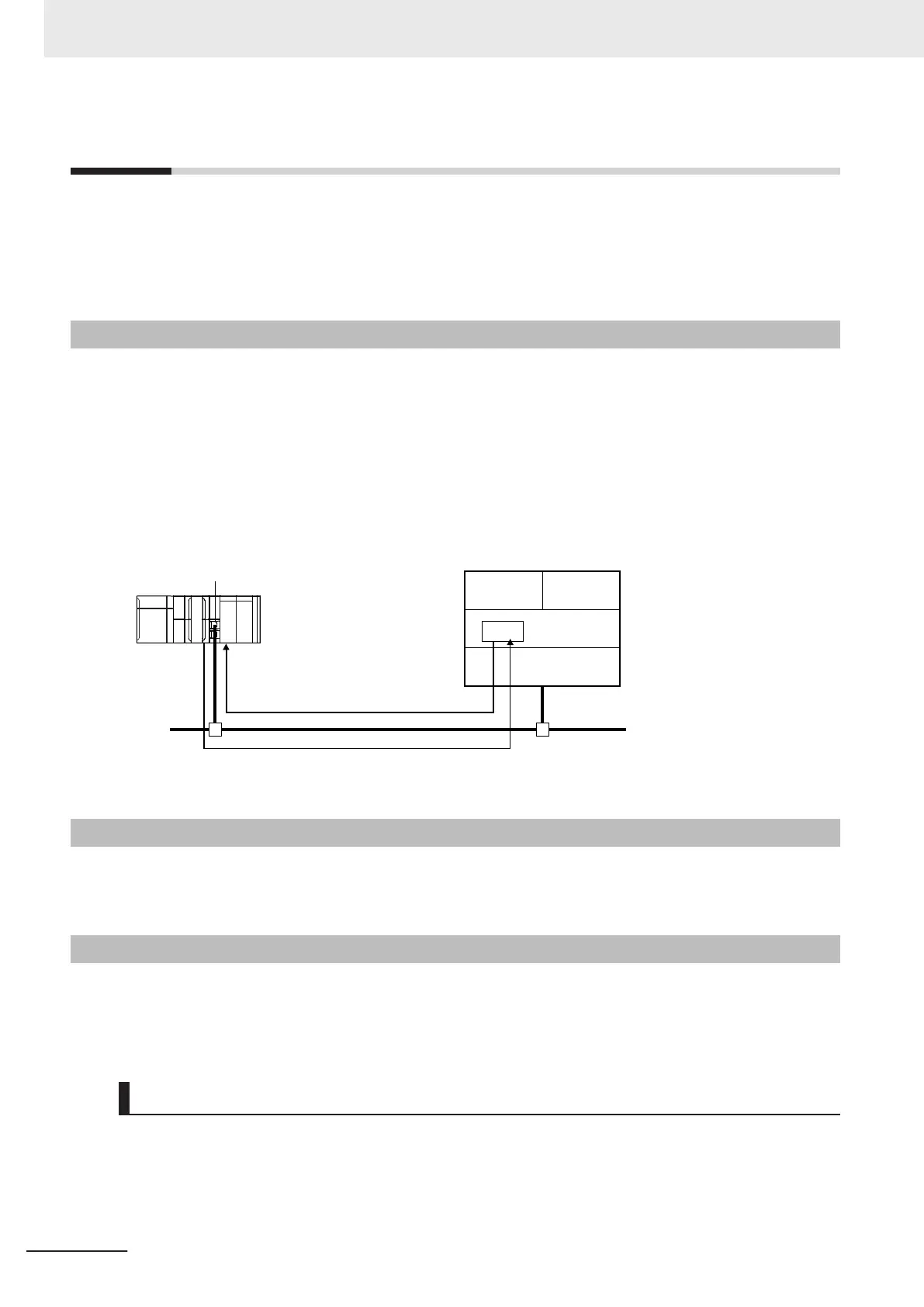6-1
Testing Communications
If the basic settings (in particular the IP address and subnet mask) have been made correctly for the
built-in EtherNet/IP port, then it is possible to communicate with nodes on the EtherNet/IP network.
This section describes how to use the PING command to test communications with the built-in Ether-
Net/IP port.
6-1-1
PING Command
The PING command sends an echo request packet to a remote node and receives an echo response
packet to confirm that the remote node communications are normal. The PING command uses the
ICMP echo request and response. The echo response packet is automatically returned in the ICMP.
The PING command is normally used to check the connections of remote nodes when you set up a
network. The built-in EtherNet/ IP port supports both the ICMP echo request and response functions.
If the remote node returns a normal response to the PING command, then the node is physically con-
nected correctly and Ethernet node settings are correct.
Echo response
Echo request
Rem
ote node
(e.g., host computer)
Built-in EtherNet/IP port
6-1-2
Using the PING Command
The built-in EtherNet/IP port automatically returns an echo response packet in response to an echo
request packet sent by another node (e.g., host computer).
6-1-3
Host Computer Operation
The PING command can be executed from the host computer to send an echo request packet to a
built-in EtherNet/IP port.
The following example shows how to use the PING command in the host computer
.
Application Method
Input the following command at the host computer's prompt ($):
$ ping IP_address (host_name)
6 Testing Communications
6-2
NJ/NX-series CPU Unit Built-in EtherNet/IP Port User’s Manual (W506)

